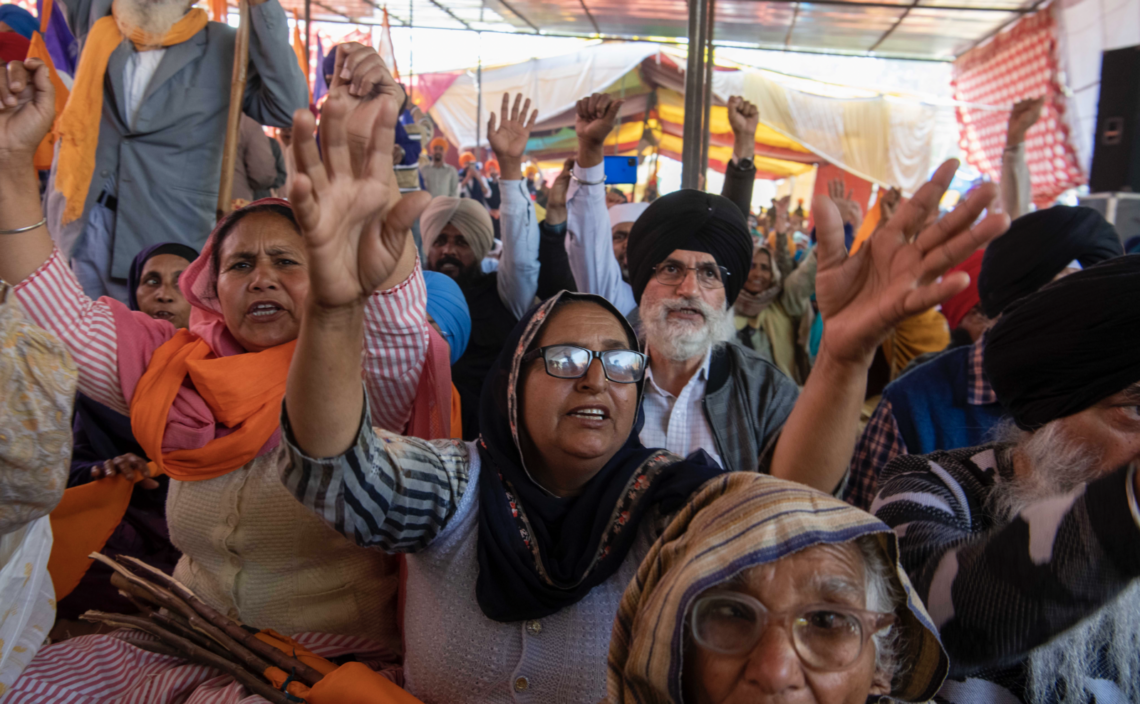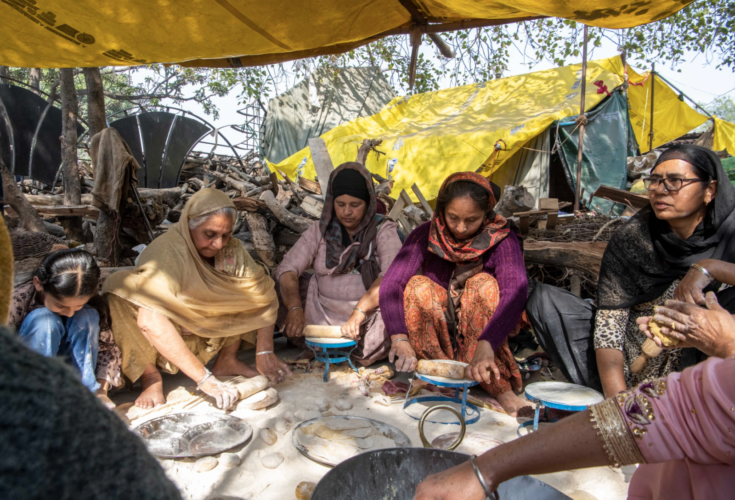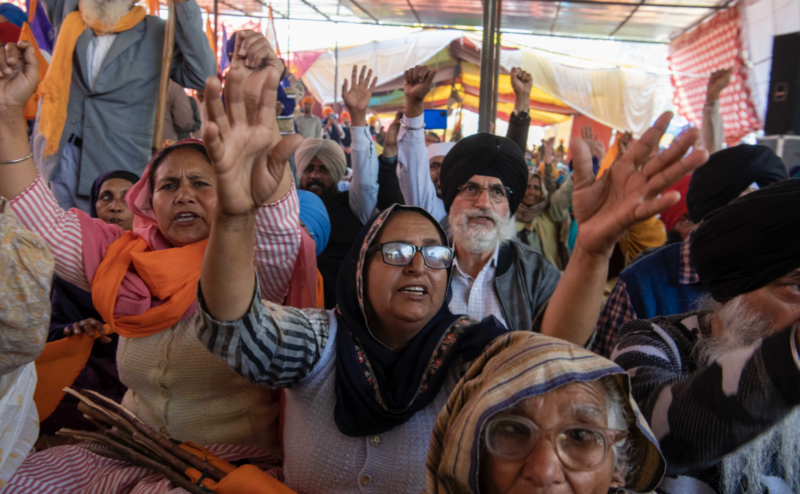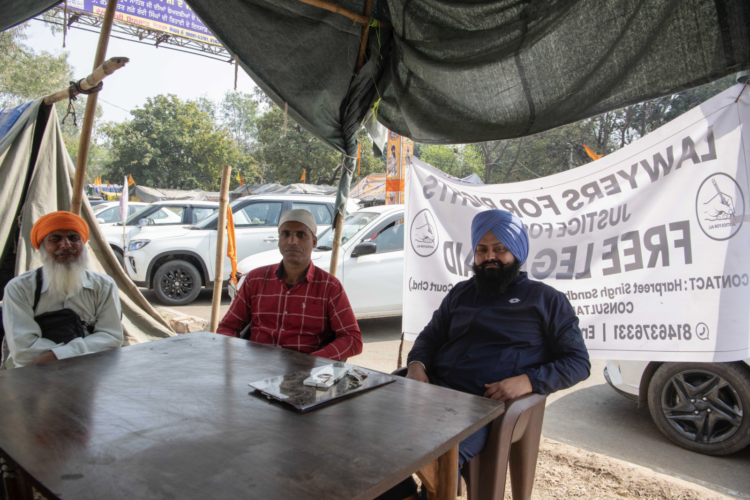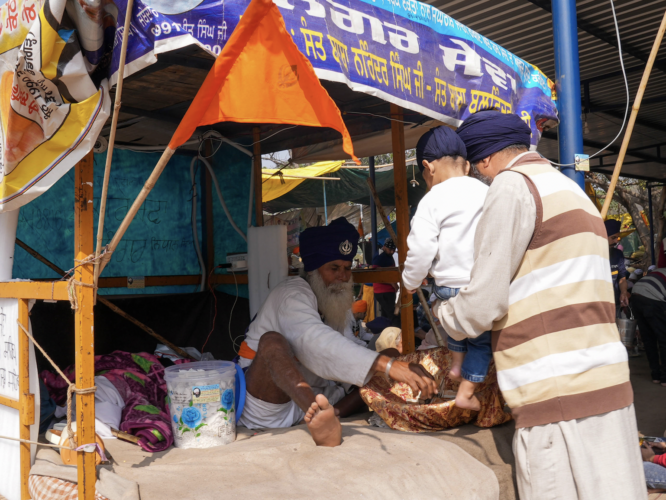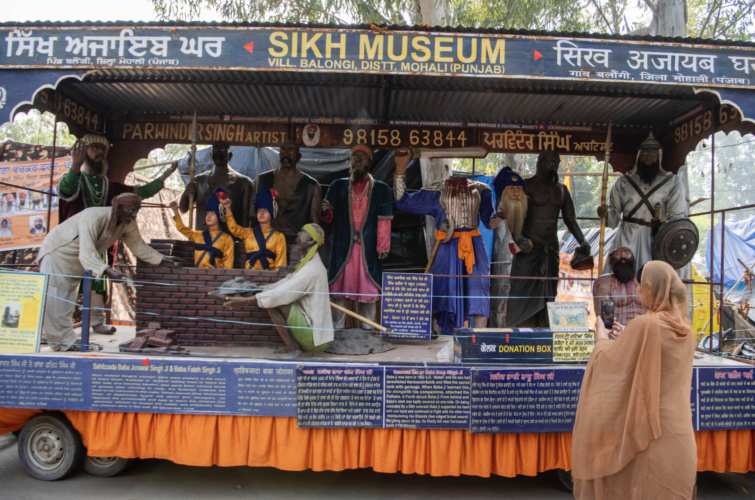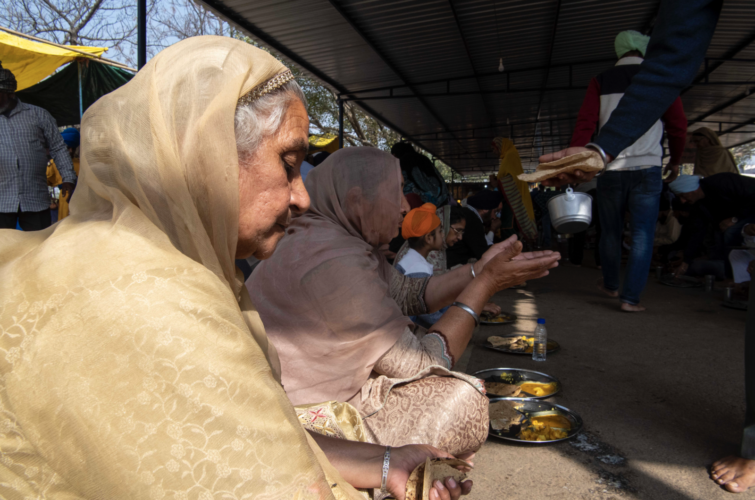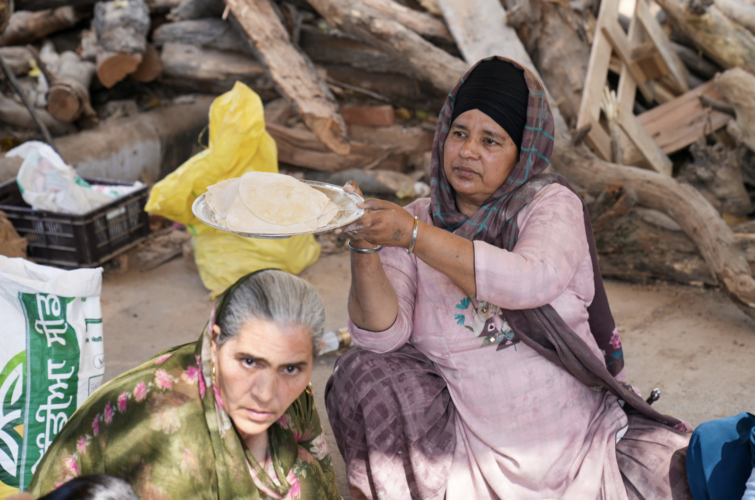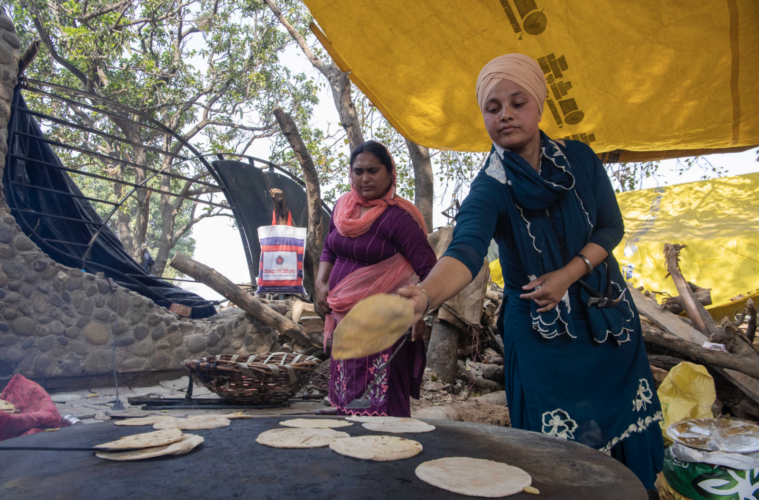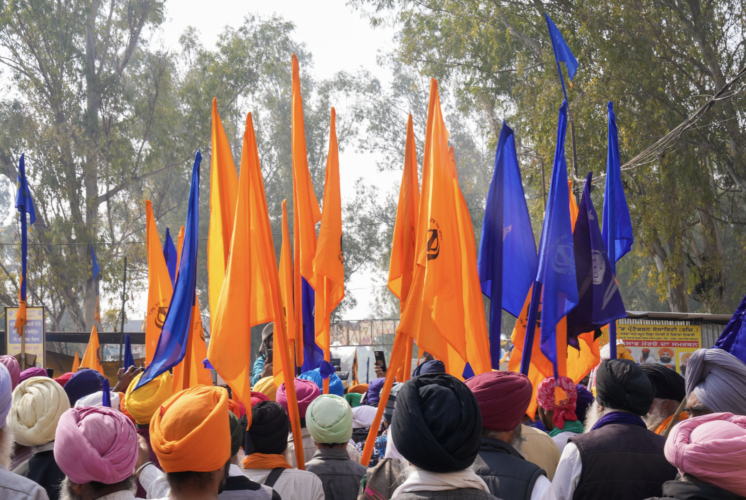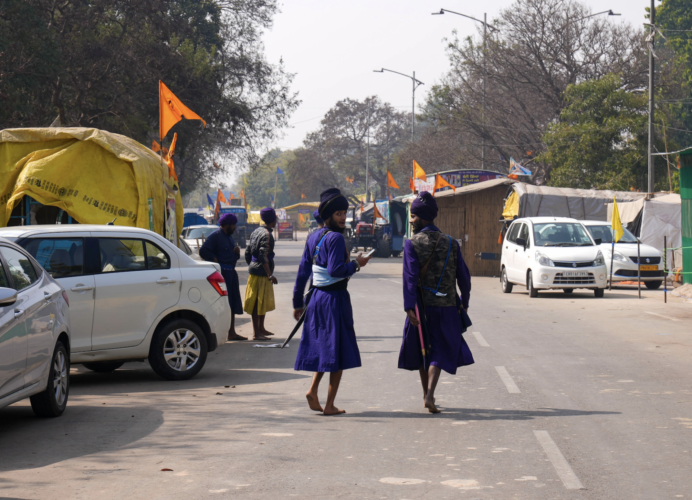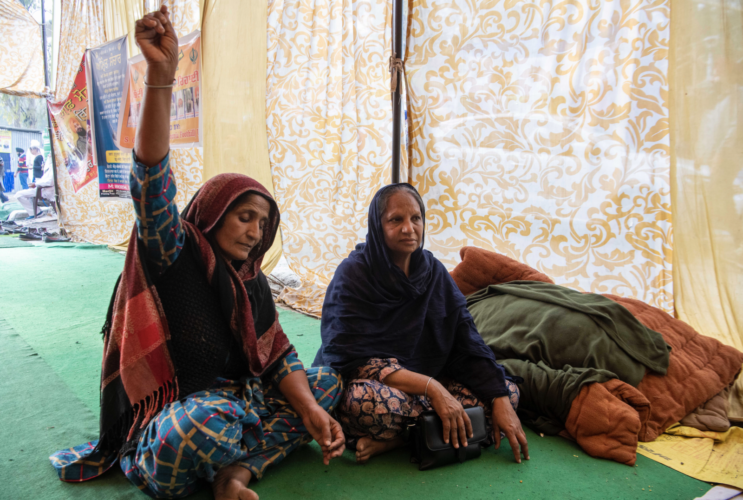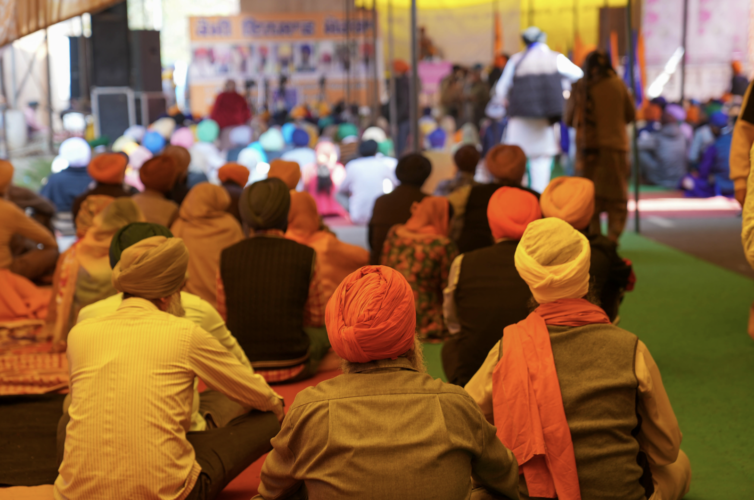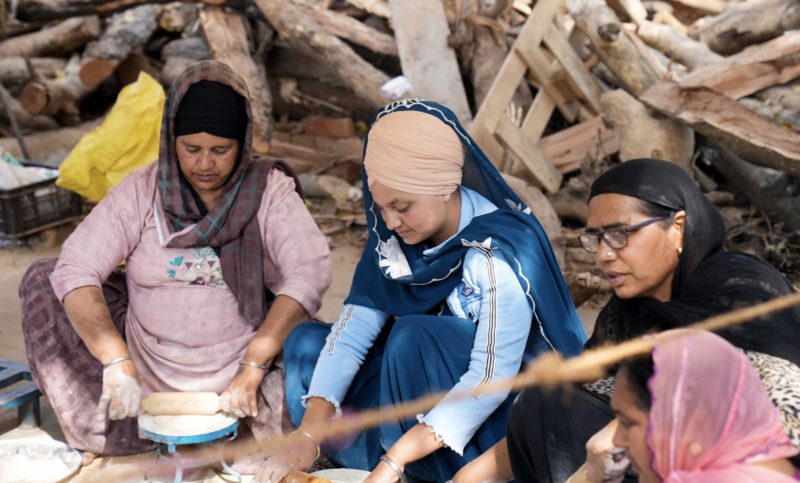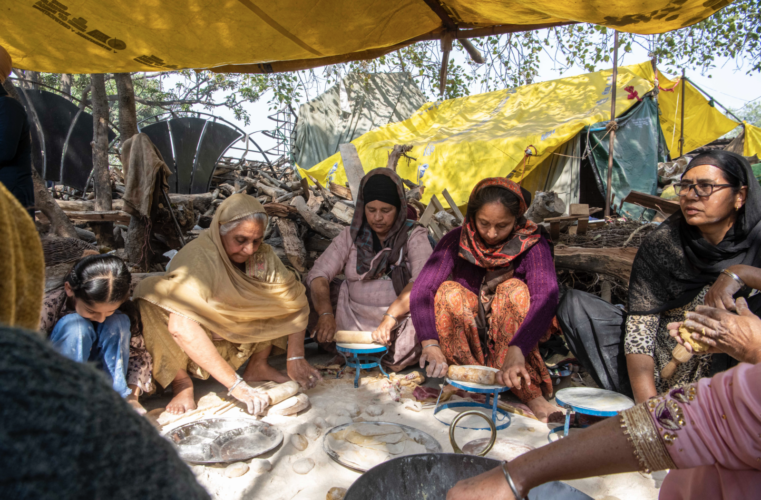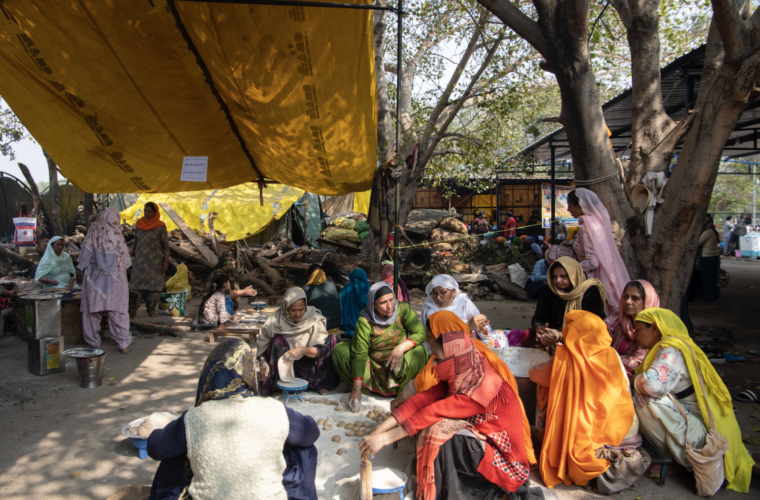By Rohit Lohia
Content note: mentions of violence and sexual assault.
Background
On January 7, this year a group of activists gather under the aegis of banner of Quami Insaaf Morcha (Sikh Nation Justice Protest or Justice for the Sikh Nation) to demand the release of Bandi Singhs – Sikh prisoners who have completed their life sentences. They started at the historical Amb Sahib Gurdwara in Punjab’s Mohali with the goal of marching towards Chandigarh. The protestors, however, were stopped at the Chandigarh-Mohali border at the Dolphin Chowk near Yadavindra Public School, one of the main arterial roads from Chandigarh to Punjab. What started as a march is now a pakka morcha (semi-permanent protest/sit-in). It is based on the model of the farmers’ movement back in 2020-21 when farmers across India protested against the new farm laws which they named “Black Laws”. Like then, Singhs and Kaurs have established langars, set up their makeshift tents, and trolleys laden with rations have become home for many.
A road filled with waving colourful Nishan Sahib flags, Gurbani playing in the background. People with covered heads, and trolleys carrying posters of Bhagat Singh, Baba Jarnail Singh, young leaders, such as Deep Sidhu and Sidhu Moosewala who died untimely deaths, along with the posters of 9 Singhs convicted during the 1984 anti-Sikh violence. As soon as you cross the heavy police barricading and turn towards the morcha (protest), you see Nihangs have set up their makeshift tents with their horses at the forefront, just like they did at the Delhi farmers’ movement. The highway has become a street with stalls of flags, head covers, and stickers of Sikh Gurus and Sants, with turbaned children, as young as 3 years old, raom with their families amongst langar stalls. A movement for the release of political Sikh prisoners has become a site of a huge community coming together for the service.
While often compared to the Farmer’s Movement, which spreaded over kilometres on the outskirts of New Delhi, the Qaoami Insaaf Morcha is much smaller. The Qaoami Insaaf Morcha is unique as it is based on the plight and fight of the Sikh community which, has come together to demand the release of prisoners who have completed their life sentences a long ago but still find themselves behind bars. The protestors have come from all over the state of Punjab some as far as Amritsar and Gurdaspur.
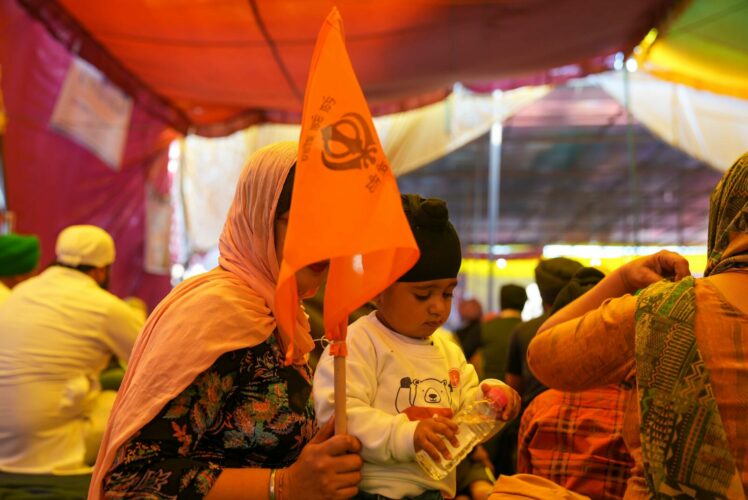
Prisoners still “A threat to Society”
As an advocate, Hardeep Singh, who has been offering his free services and has set up a free legal aid camp says, “The prisoners haven’t been released yet, they [authorities] claim that they are a threat to society. Yet, they have acquitted the killers of former Prime Minister Rajeev Gandhi, even they have let go of the culprits of Bilkis Bano, who in 2002 was gang raped by a group of men during her pregnancy and her family was brutally murdered in anti-Muslim violence in Gujarat. But, when it comes to Punjab, be it anything, they always claim that ‘This is not legit’ or, ‘This is a threat.’”
He adds, “I must tell you, among the people whose release we are demanding, many are intellectuals, like Professor Devender Pal Singh Bhullar who was a professor at one of the top colleges in Northern India and has been behind bars for last 27 years. He has even lost his mental stability. The conditions they are in, they can’t do anything, even if they come out.”
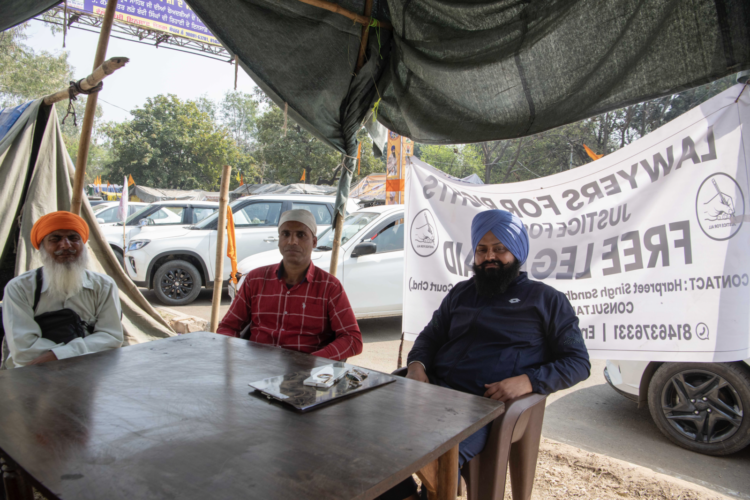
Singh says, “A life term sentence, according to the Indian penal code, is between 14-20 years. Considering the 14-year terms, many of the prisoners we are protesting for have been [in jail for] almost double that. This act is a violation of human rights in international law. Apart from the 9 prisoners [in question], the total number of political prisoners is almost 35. They were a part of the movement known as Kharku Sikh (militant Sikhs demanding a separate state of Punjab from India.) They have not been convicted for anything which they might have done for their personal interests.”
A few of the Bandi Singhs are those convicted of killing former Punjab Chief Minister Beant Singh and others were charged for the bomb blasts during the anti-Sikh violence in 1984. Most of them have been charged under the Terrorist and Disruptive Activities (Prevention) Act (TADA) or the Explosive Substances Act, while other were charged with murder, attempted murder, or conspiracy. The prisoners include people like DevenderPal Singh Bhullar who was arrested in a 1993 Delhi bomb blast case and, Gurdeep Singh Khera who was arrested in 1990 in connection with two bomb blasts – one in New Delhi and another in Karnataka – and sentenced to two life terms under the TADA.
“I believe we have to come together and stand collectively,” Ranjit Kaur
As soon as you enter the protesting area, a chant of “Jo bole so Nihal, Sat Sri Akal” is heard from all corners and hundreds of people, including a large group of women and children, appear. The protest, which has been ongoing for more than 40 days now, has a main stage area with huge tents and a small gurudwara. People are gathered, listening to the orators on stage and others are resting after completing daily chores.
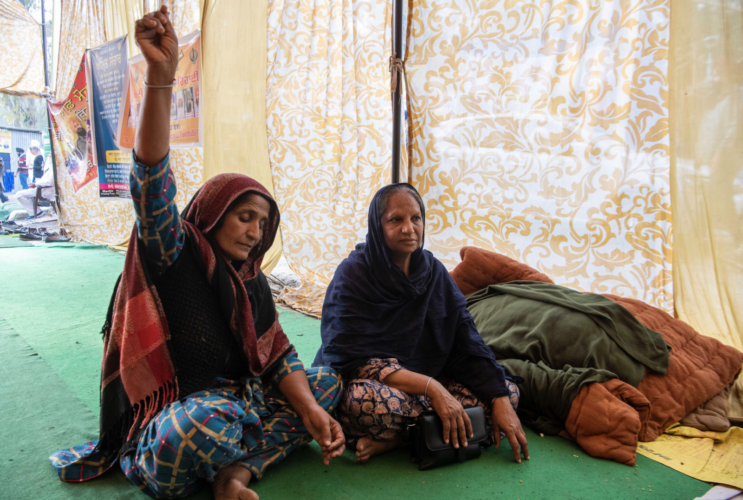
While Raj Karega Khalsa chants come from the stage, I see a woman sitting at the end of the tents, lost in her thoughts. Ranjit Kaur (58, Mohanil) is a widow and mother of a son and has comes to the protest every day since 9th January. I tried to ask her what keeps her motivated, she is lost in the trance and her eyes spark as she says, “I am an Amrit Sanskari, devoted to the service of Sikhi and my Guru Gobind Singh Ji. For any wrongdoings against us, our community, or to our Guru Granth Sahib, I believe we have to come together and stand collectively, to survive.”
Ranjit adds, “A Sikh doesn’t cause harm to anyone, but government institutions are at fault lines with our community. Our Singhs aren’t released, which is unlawful and unconstitutional, so we are here. Being an Amritdhari I have already sacrificed my head in a way, to my community.”
Finding strength in her religion, she adds, “The prayer we offer gives us strength. Even by just reading Mul Mantra of Guru Granth Sahib Ji, no matter if you are amritdhari or not. I feel like you get courage. Apart from my genetic mother, my mother is Mata Sahib Kaur.”
This is Ranjit’s first protest and she finds the concept of coming together to be empowering. She feels only a woman can manage her house and fight for her rights, simultaneously. Joining the protest each morning, Ranjit says, “I wake up real early in the morning, offer my prayers (nitnem) to the Guru. After that, I clean the home, wash clothes, perform household chores, and then come to the morcha at 9 am. Here, I help in making langar, cleaning utensils, and offering my services to help in any way that I can. When I’m tired, one comes to the stage area and relaxes, while listening to the people giving speeches.”
As I start leaving the main stage area, Ranjit closes her eyes, rests her shoulder on her bag. “’Ik Onkar” is heard over the speaker.
Langar Seva Central to Protest
A Sikh community gathering is incomplete without the langar. A cultural phenomenon which fascinated the people living in Delhi slums near the farmer’s protest sites; children of economically marginalised communities used gather for rare, hot food and milk.
Similar to this pattern, as soon as you leave the main stage area and take a left, lies a huge langar tent where crowds of women are seen sitting and rolling roti. Other women cook the rotis, while men serves the scores of protesters, just next to the cooking area. Women coming from different backgrounds and classes sit together to roll and cook rotis, the crowd comprises of women of every age ranging from 15 years to 60 years old.
Navjot Kaur (20, Karnal, Haryana) sits in the back rolling the chapatis and looks at us while we talk to other women and hesitating to speak. She finally says, “Service is everything. You get everything from serving people. Everyone is here for our community. How can I sit at home?”
First-Time Protestors Draw on Sikhi
Navjot, who married just 8 months ago, moved to Mohali with her husband for his job. While he works as a driver and welder and has found employment at the protest site. Kaur has been joining the morcha as a first-time protestor offering her services in langar seva. She feels, “For the first time, I am experiencing the power of the people and how people from our community have come together to fight for our rights.” While Kaur finds strength in her Sikhi and gets herself occupied with work again, she finds hope in her new life and adds, “I will teach my future children to always go to protests, to come together with people, and to stand for their community.”
Adjacent to Navjot, another woman in her 20s cooks roti on the large black stove. Turban on her head, she smiles hearing her. Mandeep Kaur (25, Mohali) attends a protest for the first time in her life. Mother of a child, Mandeep says, “I am a follower of Sikhi, my religion teaches me to stand for the community and die for it, if need be.”

Her aunt, Surinder Kaur (55) with a turban on her head joins Mandeep and says, “It has been 18 years since I became an Amritdhari. I made my whole family Amritdharis. Now my life and fight are only for the community.” Having attended the Delhi Farmers Protests, Surinder has to persuade her family to join the protest. “My family was hesitant for me to come here as I have to take care of 3 children and my husband. But I was adamant to come. I convinced them that I will manage the house as well as be a part of the fight for our community.”
Daily Rituals of Protesting
While mostly a peaceful movement, the protest has seen a couple of confrontations with the authorities. On January 18, some protesters attacked the vehicle of SGPC Chief Harjinder Singh Dhami when he visited the dharna site, he escaped unhurt. On February 8, a group of protesters and Nihangs, including some riding horses, clashed with the police while trying to enter Chandigarh to hold a demonstration outside Punjab Chief Minister Bhagwant Mann’s residence to highlight their demands. Punjab Police has since increased surveillance of the site, even deploying bullet-proof tractors there.
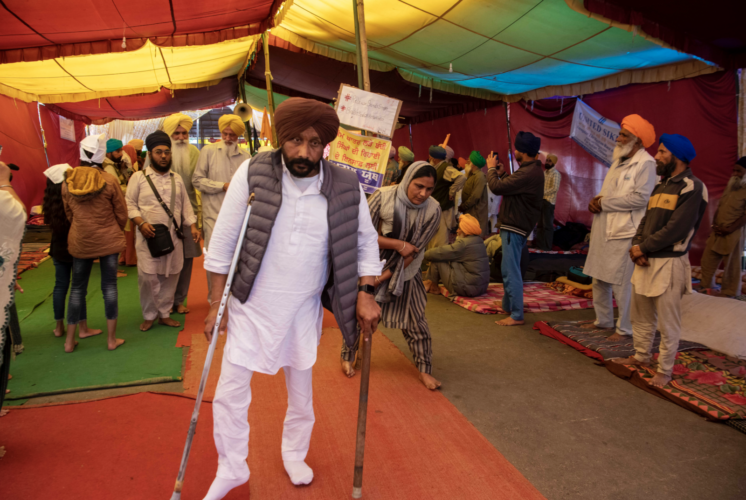
The daily rituals of the protest involve a group of 31 people being sent to the Chandigarh border to demand they be allowed to march to CM Mann’s house. Protestor Rajinder Kaur (48) was in the February 8 delegation but was hurt during a confrontation with police and objectors when stones were hurled towards the protestors.
As the sun starts to set in, the protestors from nearby areas wait for the 31 agitators to return. Being hailed as the heroes, the group is welcomed with slogans of “Long live revolution” and “Jo bole so nihal- Sat Sri Aakal”. The women and children look at the group with a shine in their eyes and raise their hands to participate in the slogans.
When asked by Rajinder how she feels about men taking charge of leadership and being at the forefront while women are mostly involved in making langar she said,
“Women of Punjab don’t want to be in the forefront. They feel like it will be an insult to the patriarch of the family. We do walk beside the men of the family, but when it comes to being in leadership it is men I want to see. But the atmosphere is changing. Young women of Punjab are getting educated and soon will be taking charge in the leadership.”
Sanitation Not an Issue
The morcha follows the template of the Farmers Proest where farmers set up mobile toilets and bathrooms; crossing the langar and stage area, lines of automatic washing machines and mobile washrooms are found.
Rajinder Kaur adds when asked about the toilet facilities, “There’s a temple nearby, people from the temple are helping us, offering us to take baths and use the washrooms. Apart from that, we have mobile washrooms. Here, accommodating the toilet facilities isn’t a problem.”
Movement Continues To Grow Larger
The morcha has transformed into a huge religious gathering and Sikh men and women are protesting hand-in-hand. Women have found new friends and have been sharing their life stories with each other, feeling safe at the protest site. As Rajinder sums up, “Men here see us as sisters. We are like a family here, taking care of each other.”
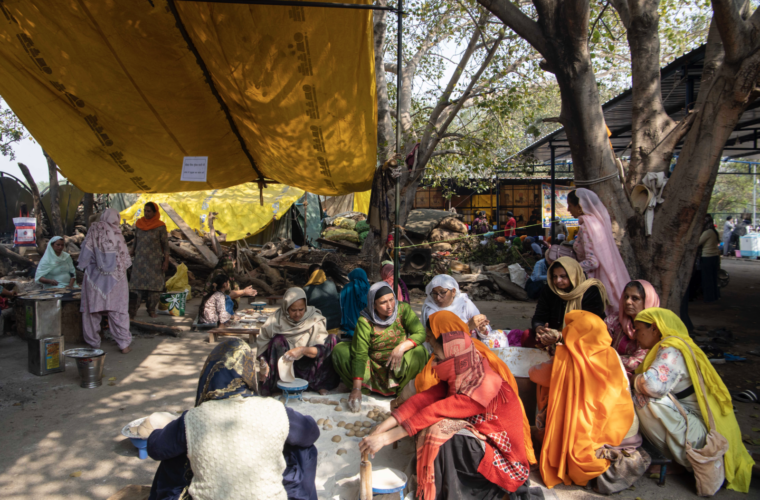
As I start to leave the morcha, I run into Ranjit again, who is still sitting in the main tent. She is so involved and dedicated and is not able to resist sharing her thoughts of the morcha, she says, “I have no hope from this morcha here. But it’s our duty to try to represent our demands in front of the government. I am here to present the things lawfully in front of the government, or else we Sikhs are equipped with other weapons and means to deal with the wrong. Why we are asking for Khalsa rule? Because we are being ostracised, we are being persecuted. Sikhs don’t believe in discrimination even for animals, so we are not going to take it too. To live in peace, to live with love we are demanding for Khalsa Raj (rule of Sikhs).”
The movement grows larger by size each day: a gathering of people of various ages and backgrounds, all considering themselves children of Guru Gobind Singh Ji. Encouraged by the repealing of the farm laws, many are confident they will be victorious here too. Many recall the diaspora and their support for the Farmers Movement movement. Being an important part of the global influence, Ranjit Kaur says, “Children outside the nation should call their family and ask them to join the movement in the fight for the rights of the Sikh community. They should represent us outside also, forcing their respective national governments to have diplomatic conversations with Indian Prime Minister Narendra Modi.”
About Rohit Lohia
Rohit Lohia is a photographer and writer based out of New Delhi, India. Lohia’s work explores the connections between social injustice, human rights, gender conformity, mental health, notion of belonging, and communities subjected to discrimination and marginalization is his home nation of India.
He has been published in The Caravan, The Telegraph, Associated Press, The National UAE, and more.

